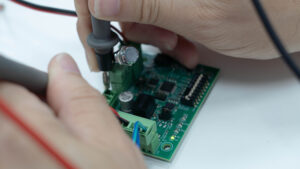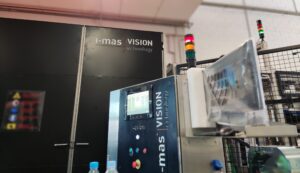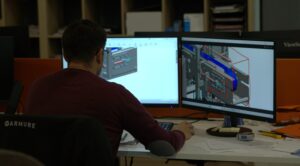In industrial automation, the terms “fixed,” ‘programmable’ or “flexible” describe much more than the technology next to the line. They define the factory’s ability to adapt to market, product design and talent challenges. Knowing the differences-and combining them with machine vision and robotics systems-is crucial to designing process automation projects that are scalable and cost-effective.
The advent of compact servomotors, the falling cost of sensors and the standardization of protocols such as OPC-UA have democratized these technologies even for SMEs, which no longer need to invest millions to benefit from automation.
Fixed automation: maximum productivity, minimum versatility
Hard automation employs machinery dedicated to an invariable sequence of operations. It is the preferred choice when volume is very high and reference changes are infrequent. Its precision and speed make it the queen of continuous environments, such as car body welding or beverage bottling.
What are the advantages of fixed automation?
- Extremely low cost per piece.
- Production rates impossible to match manually.
- Almost perfect dimensional repeatability.
What are the limitations of fixed automation?
- The line must be stopped (or redesigned) at any design change.
- High initial investment, amortizable only with large lots.
Programmable automation: the bridge between batches and customization
In programmable automation, the mechanics remain, but the logic is modified by software. By reprogramming a PLC or a robot, the plant can move from one series to another without replacing equipment.
When is programmable automation recommended?
- Medium batch production with frequent changes.
- Pre-series or ramp-up phases where the product is still evolving.
- Organizations seeking a balance between variety and unit cost.
The SMED facility reduces downtime and allows niche markets to be exploited without dramatic penalties in overall equipment efficiency.
Flexible automation: the heart of Industry 4.0
Soft automation takes adaptability to the extreme. It combines robotic modules, intelligent sensors and cloud-based software to reconfigure operations in minutes – or seconds – without stopping the line. It is the natural enabler of mass customization and on-demand production.
What are the benefits of flexible automation?
- Format change “on the fly”.
- Native integration with MES/SCADA and IoT for data-driven decisions.
- Manufacturing unit batches with the efficiency of a massive line.
What are the challenges of flexible automation and machine vision systems?
- Complex initial engineering and higher CAPEX.
- Dependence on profiles with digital skills and industrial cybersecurity.
Machine vision and robotics: value multipliers
Any of the three models increase their performance when industrial robots and machine vision systems are added. Robots provide repeatability and ergonomics; vision detects defects, guides the robot and feeds the quality system in real time.
How do machine vision and robotics combine to optimize industrial automation?
- Elimination of manual inspections that slow down the flow.
- Reduced returns due to early detection of defects.
- Comprehensive traceability for zero defect projects and continuous improvement.
Companies such as Ford have already demonstrated increases of up to 15% in assembly speed by integrating AI into the control of existing line robots.
Ultimately, selecting the most appropriate choice between fixed, programmable or flexible automation requires an assessment of demand volatility, product life cycle and available budget.
In the engineering department of I-MAS we apply methodologies based on more than 20 years of experience in industrial automation and machine vision, integrating Deep Learning models in different industrial processes. This approach allows transforming advanced technologies into applied solutions, improving productivity, reducing errors and optimizing traceability and plant control.
Want to learn more about our services? Contact us or visit our projects section!



